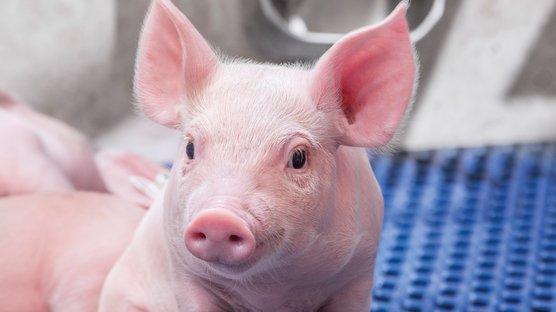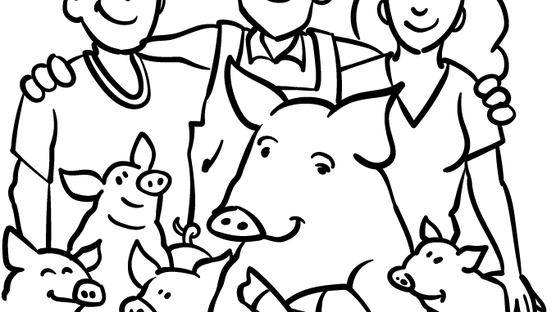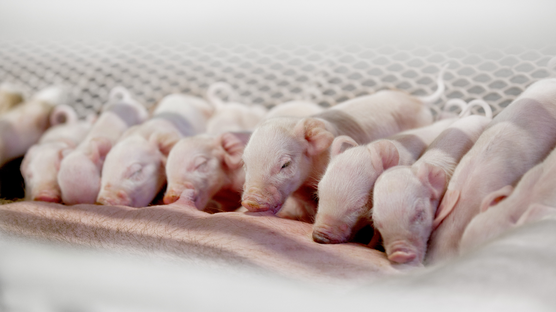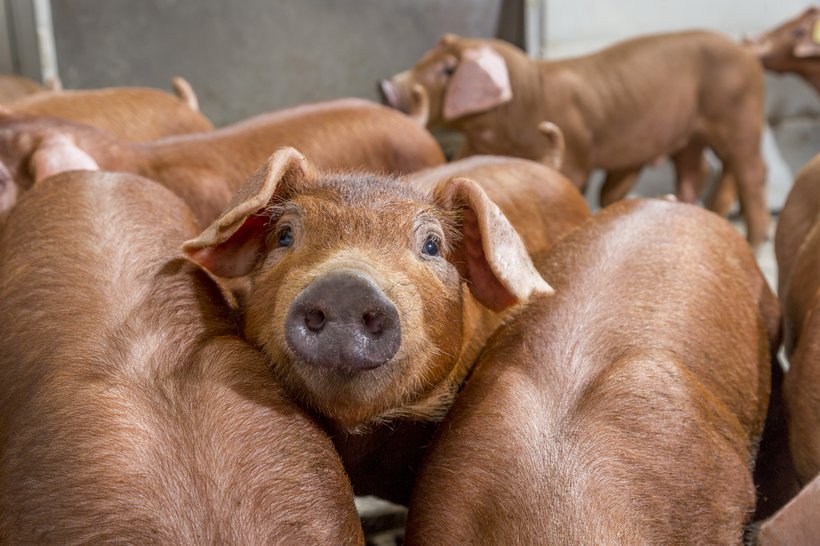
Published on Feb. 18, 2025
How to Improve Swine Performance Efficiency
In the swine industry, optimizing performance efficiency is vital for sustainability and profitability. This article explores four key criteria for achieving this goal: Uniformity, Growth Rate, Carcass Uniformity, and Predictability and Consistency. Addressing these factors enhances operational efficiency, meets market demands, and minimizes waste.
Hypor's dam and sire lines drive economic returns across the entire pork chain. They also support a sustainable future for all. This technical article provides valuable insights and strategies aimed at driving the advancement of industry standards.
Uniformity
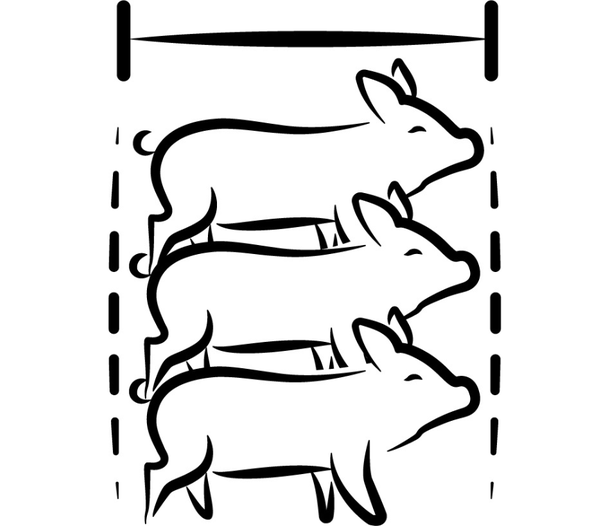
Pig uniformity is a cornerstone of performance efficiency, driving better growth rates, reduced variability, and increased profitability throughout the production cycle. Achieving uniformity ensures stronger, more homogeneous piglets that develop into high-quality animals, meeting market demands for carcass quality and weight. This results in consistent Full Value Finishers capable of reaching slaughterhouse requirements and maximizing economic returns.
To achieve this, it is essential to address seven key factors that influence the uniformity of finishers.
Genetics
Genetics is a fundamental factor influencing the uniformity of finishers. Hypor’s breeding program uses pure terminal sire lines known for higher uniformity. Moreover, we base our selection on the Best Linear Unbiased Prediction (BLUP) index. This index considers individual weights of piglets at specific lactation stages, ensuring uniformity improves from a young age.
Incorporating genomics into the breeding program further improves the accuracy of genetic selection, contributing to a more consistent and uniform product.
Sanitary Conditions
Pig health management is key, with strict biosecurity measures preventing issues that impact production. Mixing piglets from different origins is also discouraged to avoid the introduction of health risks. Acting swiftly, effectively and efficiently is crucial during health issues to prevent more animals from losing weight.
Physiological and Ethological Factors
Physiological factors such as gender separation, age, and weight consistency within the same age group improve finisher uniformity. Additionally, ethological factors like social dynamics and stress factors also play a significant role in growth variability. Lower-hierarchy animals experience more stress, which can hinder their growth. Reducing social stress through proper grouping and management will help minimize growth variability.
Management Practices
Effective herd management is key to improving uniformity by optimizing herd size, space allocation, and feeding strategies. Proper training for personnel and access to adequate space and equipment are crucial for boosting efficiency and bottom-line. Skilled staff can better identify and address factors impacting growth uniformity, driving higher productivity.
Nutrition
Feeding strategies tailored to the specific needs of the pigs are key to ensuring uniform growth. Multi-phase feeding helps to improve growth consistency and reduce costs. Optimizing feeding programs is then essential for both reducing costs and improving performance.
Environmental Conditions
Implementing climate control systems in finishing units can help improve and standardize growth rates, feed intakes and uniformity. These systems will enable you to better utilize the genetic potential of your animals.
Management Before Slaughter
The final key factor in ensuring uniformity is managing pigs at the end of their life. Efficient logistics during the loading process reduce weight distribution deviations, preventing penalties for pigs outside target weight ranges and protecting profitability. By carefully managing this phase, producers can reduce variability and maximize the value of their animals.
Focusing on these key factors optimizes genetic potential. They help minimize waste and costs, paving the way for a sustainable future in swine breeding operations.
At Hypor, our goal is that more than 95% of our pigs placed in the nursery will reach market. This standard emphasizes survivability from wean to finish, relying on the heavy birth weights delivered by Hypor's product portfolio.
We achieve our standard for sustainable piglet birth weight, with an average of 1.5 kg (3.3 lbs). Heavier piglets at birth show better survival rates and reach market weight faster. We strive for no piglets under 1 kg (2.2 lbs) and currently achieve 90-96% above this threshold, depending on the line.
Regularly monitoring piglet birth weights on nucleus and commercial farms helps maintain this standard. It allows us to improve quality and uphold uniformity throughout the production cycle. Indeed, uniformity at the beginning means uniformity until the end.
Growth Rate
Growth rate is another crucial point in swine breeding, directly influencing performance efficiency and environmental sustainability. Optimizing growth rates enables more meat production. It allows using the same space, less energy, and less feed, meeting global demand while reducing environmental impact.
Three key factors are important for achieving balance and ensuring efficient, sustainable production. These factors are Average Daily Gain (ADG), Daily Feed Intake (DFI), and Feed Conversion Ratio (FCR).
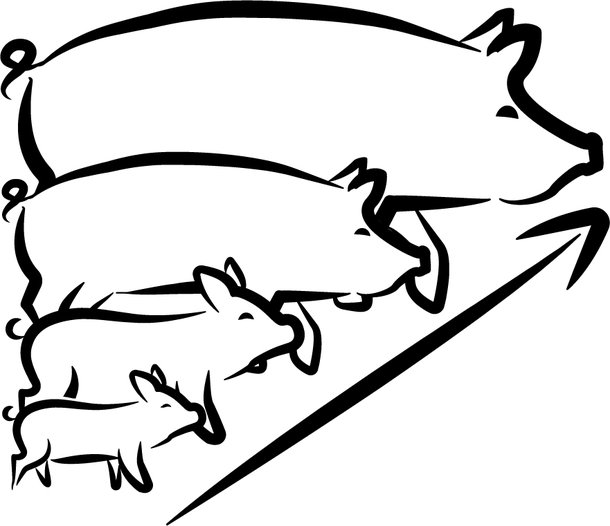
The Average Daily Gain (ADG) is a key growth rate metric, measuring the average daily weight gain of pigs. It plays a crucial role in determining carcass yield efficiency. A higher ADG translates directly into increased production. For example, a small increase of 100g in ADG can raise carcass yield by 12.5% per square meter, greatly improving production efficiency.
The Daily Feed Intake (DFI) refers to the amount of feed consumed by pigs on a daily basis. To achieve optimal growth, animals must consume enough feed to reach their maximum growth potential under optimal conditions. Proper feed intake helps pigs manage environmental challenges like temperature fluctuations or load-related stress, ensuring steady growth. Optimizing DFI ensures that animals can reach their target growth rates, while also enabling better overall herd health.
The Feed Conversion Ratio (FCR) measures feed efficiency by comparing the amount of feed consumed to the weight gained. FCR is a critical metric for optimizing growth while reducing feed waste. An imbalance between feed intake capacity and ADG can negatively impact FCR, reducing overall efficiency.
ADG, DFI, and FCR closely connect and show moderate heritability. We calculate Feed Conversion Ratio (FCR) by dividing Daily Feed Intake (DFI) by Average Daily Gain (ADG). Therefore, improvements in one factor directly influence the others. For instance, a negative genetic correlation between ADG and FCR results in better growth rates and improved feed efficiency.
Hypor’s breeding program has been continuously evolving to optimize growth rates and feed efficiency. Since the 1960s, growth, feed conversion, and intake capacity have been the primary criteria for selection.
Over a decade ago, Hypor integrated Residual Feed Intake (RFI) into its breeding program to measure pigs' energy efficiency. RFI tracks energy consumed but not used for growth or body maintenance. This helps identify and reduce waste, leading to better efficiency.
The final product from an F1 sow and terminal boar gets 50% of its traits from each, with both contributing 25%. Hypor's Combined Crossbred Pure-line Selection (CCPS) program evaluates these results across various countries under commercial circumstances.
However, comparing ADG across different environments can be challenging because of the influence of both environmental and genetic factors. Diseases can also significantly affect ADG. Therefore, balancing growth rate with other traits is essential for optimizing performance and ensuring long-term sustainable, profitable breeding.
Carcass Uniformity
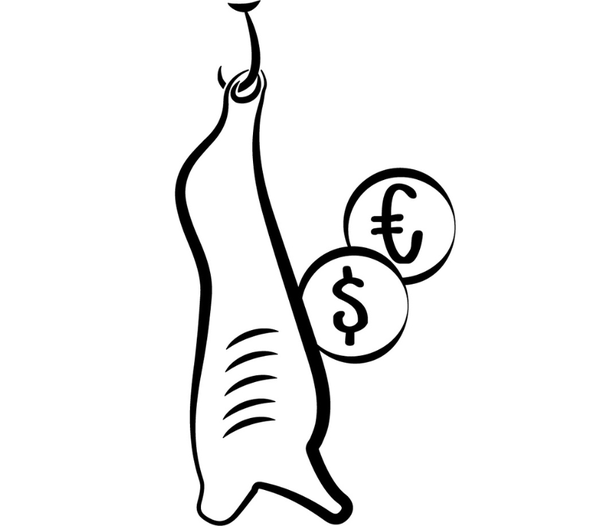
Carcass uniformity is essential for efficiency and profitability in swine production. Consistency in weight, composition, and meat quality reduces operational inefficiencies and marketing challenges. Pigs within preferred ranges fetch higher prices, while those outside face discounts. Minimizing variation improves profitability for both producers and processors.
Optimized management, nutrition, health, and breeding strategies are key to reducing carcass variability1,2.
Genetics
The use of uniform parent stock, such as F1-cross sows, results in more uniform progeny. Using terminal sire lines with similar breeding values, like growth rate and backfat, ensures a more uniform offspring. This is especially important when raising pigs to heavier weights, where variance increases3,4.
Birth and Weaning Weights
Variance at birth amplifies as pigs grow, so minimizing early variance maintains uniformity at the end. Proper nutritional and management strategies for both gestating and lactating sows help promote consistent birth and weaning weights.
Stocking Density
Maintaining optimal stocking density is important for ensuring steady growth and reducing final product variability. Improper stocking rates can undermine efforts to standardize production and lead to significant disparities in the final product.
Disease Management
Segregating pigs of different ages helps reduce the transmission of various diseases. Vaccination, hygiene, and strategic medication, when needed, are essential to reduce disease impacts that increase weight and quality variance in pigs.
Feeding Strategies
Phase-feeding strategies can improve feed utilization. However, improper implementation of this strategy can increase variance.
Production Management
“All-In, All-Out” production systems are more effective at reducing growth rate variation compared to continuous flow systems. However, grouping pigs together in one "package" can increase weight variability. Sorting and weighing pigs before slaughter can improve uniformity.
Social Effects
Sorting and mixing pigs can disrupt social order, leading to stress and increased variance. The significance of this, however, may be group-size related and may be of lesser concern in large groups.
Hypor’s global parent stock portfolio includes one F1 female and three pure sire lines. Each meets specific requirements for carcass, meat quality, and uniformity in diverse markets. These markets include the U.S., Canada, Spain, Germany, Japan and Italy.
This meticulous approach ensures that 98% of Full Value Finishers meet market and slaughterhouse grid requirements, such as carcass weight, muscle or fat depth, primal yield targets, and meat quality. Our Piétrain and Duroc purebred sire lines excel in meeting these standards across a wide range of markets.
Predictability and Consistency
Predictability and consistency in meat and carcass quality are essential for optimizing meat production in modern pig farming. The focus has shifted from solely maximizing individual performance to optimizing total meat production per barn surface. The goal is to produce “Full Value Pigs” - animals achieving at least 90% net return over feed costs, sold at optimal weight, with minimal culling, mortality, or underweight issues. They ensure a maximum contribution to profitability.
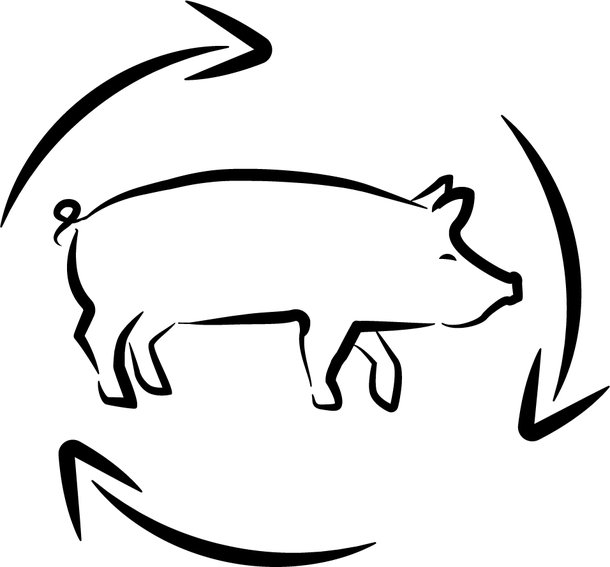
Standardized management, detailed batch control, and the ability to steer performance are essential to achieve repeatable results. Tools like weighing scales, sorting equipment, and ultrasound devices help monitor growth performance and carcass quality. They ensure pigs grow as planned.
Genetic companies and packing plants mainly use more advanced tools. When feedback to pork producers is possible, it offers a valuable tool to monitor carcass quality at farm-level.
Several key factors ensure optimal predictability and consistency.
Facilities and Buildings
Proper climate control, pen size, and sufficient feeding space are vital to ensure steady growth and minimize variation. Systems in modern barns handle increased production demands, such as higher weaning rates and faster growth.
Health Status and Veterinary Treatments
Maintaining a high health status is critical. Proper biosecurity protocols, health management, vaccinations, and treatments - especially in “All-In, All-Out” systems - are essential to prevent disease from affecting performance.
Water
Ensuring pigs have access to clean, adequate water is crucial for maintaining consistent growth and carcass quality. Monitoring water consumption can provide early indicators of disease and help prevent growth disturbances. Water consumption is directly related to feed consumption.
Feed
Meeting nutritional requirements is essential to avoid deficiencies that limit genetic potential. Multi-phase feeding tools provide fine-tuned control over pig growth and carcass composition, ensuring optimal results.
Transport Methods
Transport stress can have a significant impact on meat quality. Proper handling, 12-hour pre-transport fasting, and avoiding extreme temperatures are key to reducing mortality and improving meat quality.
Genetics
Genetics play a crucial role in achieving predictable and consistent meat quality. Optimized crossbreeding schemes ensure uniformity by evaluating genetic performance at both nucleus and commercial levels. Tailoring boars based on breeding values and utilizing Artificial Insemination enhances precision and consistency. Crossbreeding leverages heterosis to combine the best traits of different breeds, enabling breeders to meet market demands while improving efficiency and sustainability.
To summarize, achieving predictability and consistency in meat quality depends on optimized genetics, effective management, and advanced monitoring tools. Prioritizing key elements like facilities, health, and nutrition ensures efficient, sustainable production and lasting profitability.
Conclusion
Optimizing performance efficiency in swine production relies on addressing uniformity, growth, carcass uniformity, and predictability & consistency. Hypor’s breeding programs include pure terminal sire lines, advanced genetic selection methods, and sustainable practices to consistently deliver measurable results. By prioritizing heavy birth weights, feed efficiency, and uniformity, Hypor leads the way in sustainable swine breeding. We enable producers to meet market demands while minimizing waste and maximizing profitability.
References
- King, R.H. 1999. A review - Nutritional constraints to pig performance and variability. In: Manipulating Pig Production VII (P.D. Cranwell, ed.). Australasian Pig Science Association, Werribee, Vic., 245-251.
- Payne, H.G., Mullan, B.P., Trezona, M. and Frey, B. 1999. A review – variation in pig production and performance. In: Manipulating Pig Production VII (P.D. Cranwell, ed.). Australasian Pig Science Association, Werribee, Vic., 13-26.
- Mulder, H.A., Bijma, P. and Hill, W.G., 2008. Selection for uniformity in livestock by exploiting genetic heterogeneity of residual variance. Genetics Selection Evolution, 40, 37-59.
- Lammers, P.J., Stender, D.R., and Moneyman, M.S. 2007. Matching Carcass Specification for your market. Niche Pork Production.

